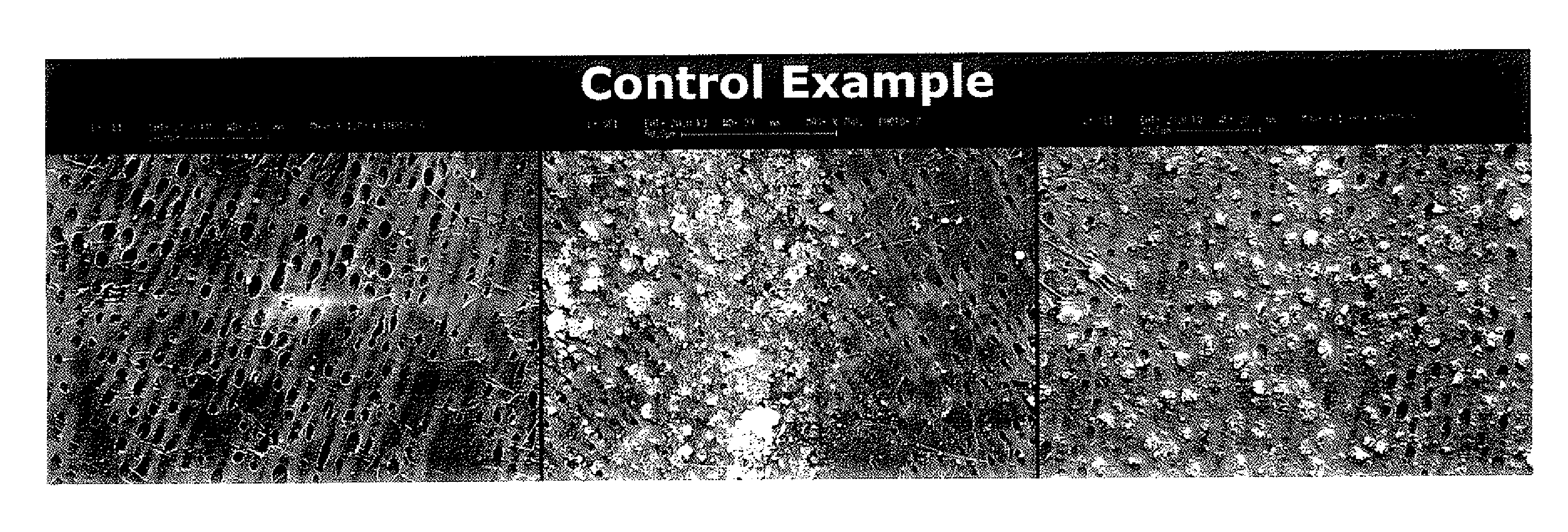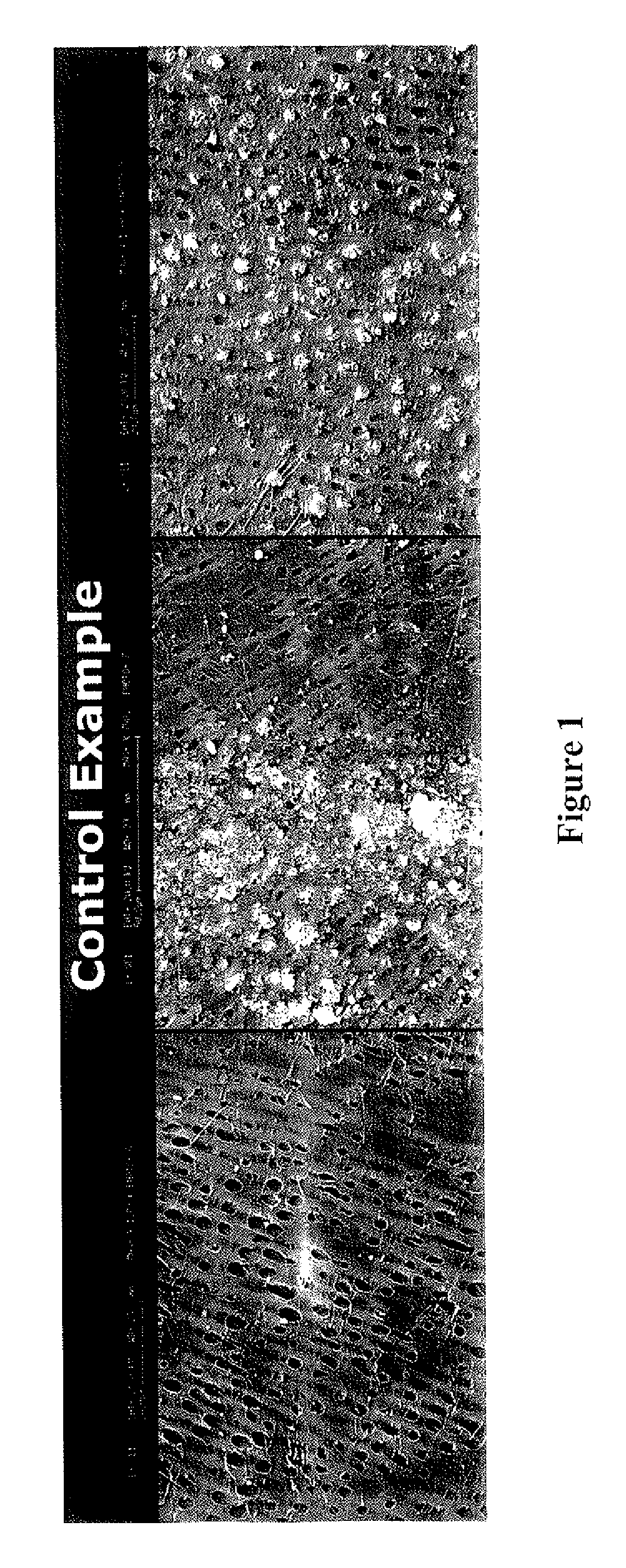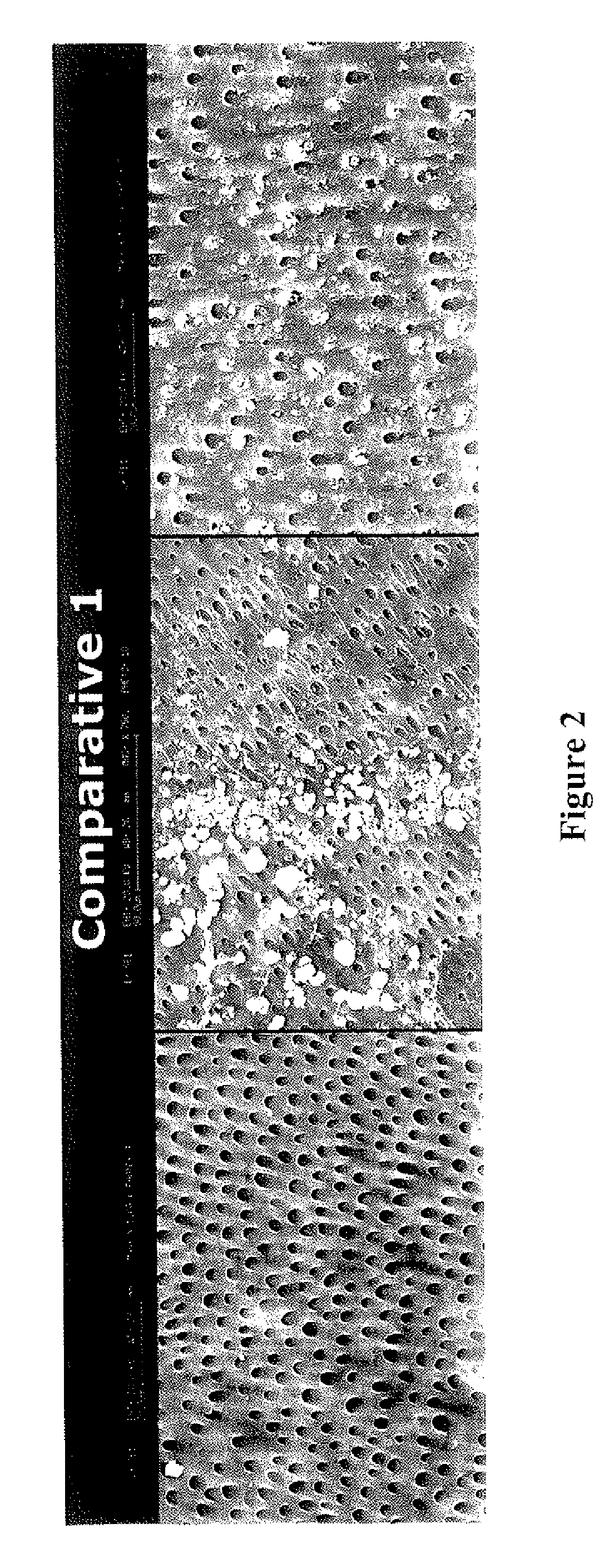Tubule-blocking silica materials for dentifrices
a technology of dentifrice and silica, which is applied in the field of precipitated silica materials, can solve the problems of tooth sensitivity becoming an issue, enamel loss or gum recession on the surface of teeth, discomfort and possibly pain of the subject person
- Summary
- Abstract
- Description
- Claims
- Application Information
AI Technical Summary
Benefits of technology
Problems solved by technology
Method used
Image
Examples
examples
[0032]Examples were prepared to study the effect on the affinity of the silica for a mammalian tooth by adding an adduct to precipitated silica materials. In the first set of batches, prepared at pilot plant scale, several samples were prepared containing the metal adduct Al2O3, while one comparative sample used had only trace amounts of aluminum or other metals as shown in Table 1. The samples, below, were prepared as follows:
[0033]The quantities of reactants and the reactant conditions are set forth in Table 1, below. First, 67 L of an aqueous solution containing 19.5 wt % of sodium silicate (having a 3.32 molar ratio of SiO2:Na2O) and 167 L of water was charged into a 400 gallon reactor heated to 87° C. with recirculation at 30 Hz and stirring at 60 RPM. An aqueous solution of sulfuric acid (having a concentration of 17.1 wt % and containing aluminum in the concentration per acid solution specified in Table 1, below) and an aqueous solution of sodium silicate (at a concentration ...
PUM
 Login to View More
Login to View More Abstract
Description
Claims
Application Information
 Login to View More
Login to View More - R&D
- Intellectual Property
- Life Sciences
- Materials
- Tech Scout
- Unparalleled Data Quality
- Higher Quality Content
- 60% Fewer Hallucinations
Browse by: Latest US Patents, China's latest patents, Technical Efficacy Thesaurus, Application Domain, Technology Topic, Popular Technical Reports.
© 2025 PatSnap. All rights reserved.Legal|Privacy policy|Modern Slavery Act Transparency Statement|Sitemap|About US| Contact US: help@patsnap.com



